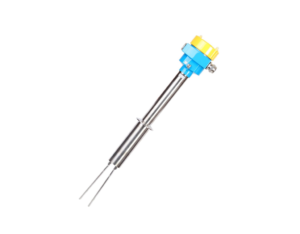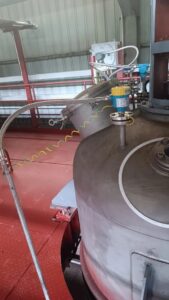Introduction
The tuning fork level switch is a liquid level detection device commonly used in industrial processes, especially in chemical plants.
Due to its high reliability and adaptability to a variety of liquid media, the tuning fork level switch plays an important role in the chemical production process.
However, despite the many advantages of the tuning fork level switch, it still faces many challenges in practical applications.
This article will explore the application of tuning fork level switches in chemical plants and the main challenges they face, and cite some related research papers as case studies for analysis.

1. Application of tuning fork level switch
The tuning fork level switch uses the principle of tuning fork vibration to detect the liquid level.
When the liquid covers the tuning fork, the vibration frequency of the tuning fork changes, and this change is sensed by the detection device and converted into a liquid level signal.
This type of liquid level switch is widely used in liquid level monitoring and control in chemical plants, such as storage tanks, reactors, separators and other equipment.
The main advantages of tuning fork level switches include:
1. High reliability: The tuning fork level switch has a simple structure, few moving parts, and a low failure rate.
2. Wide applicability: It can detect a variety of liquid media, including corrosive liquids, high-viscosity liquids, etc.
3. Accuracy: It can provide accurate liquid level detection to avoid overflow or lack of liquid.

2. Challenges in Application
1). Impact of Corrosive Liquids
Corrosive liquids, such as strong acids and alkalis, are often handled in chemical plants.
These liquids can corrode the sensor material of the tuning fork level switch, affecting its service life and detection accuracy.
One way to solve this problem is to use corrosion-resistant materials, such as stainless steel, Hastelloy, etc.
However, the selection of corrosion-resistant materials needs to be determined according to the specific chemical medium, otherwise it may not be able to completely resist corrosion.
2). Challenges of high temperature and high pressure environment
In some chemical processes, the liquid medium may be in a high temperature and high pressure environment.
The tuning fork level switch needs to be able to withstand these extreme conditions, otherwise it may fail due to temperature and pressure changes.
To solve this problem, the tuning fork level switch needs to be specially designed and material selected to ensure its stability and reliability in high temperature and high pressure environments.

3). Influence of viscous liquids and solid particles
Some chemical media have high viscosity or contain solid particles. These media will adhere to the tuning fork, affecting its vibration characteristics and causing detection errors.
To address this problem, anti-adhesion designs such as special coatings or self-cleaning functions can be used, but these measures increase the complexity and cost of the equipment.
4). Influence of electromagnetic interference
There are a large number of electrical equipment and electromagnetic fields in chemical plants, which may interfere with the signal transmission of the tuning fork level switch and affect its normal operation.
In order to avoid electromagnetic interference, it is necessary to optimize the circuit design of the tuning fork level switch and take shielding measures.

3. Conclusion
The application of tuning fork level switches in chemical plants has broad prospects, but in practical applications, they face challenges such as corrosive liquids, high temperature and high pressure environments, viscous liquids and solid particles, and electromagnetic interference.
By selecting appropriate materials, optimizing designs, and taking protective measures, these challenges can be overcome to a certain extent, and the reliability and detection accuracy of tuning fork level switches can be improved.
Future research and development should further focus on solving these challenges to promote the wider application of tuning fork level switches in the chemical industry.
